
Texas economic outlook downbeat as uncertainty increases
The Texas economy grew slightly below trend through the first quarter of 2025. While job growth appears just off its long-term annual trend rate of about 2.1 percent, the Dallas Fed Texas Business Outlook Surveys (TBOS) point to slowing activity in both the services and manufacturing sectors.
Company outlooks have deteriorated, and uncertainty has spiked, with half of TBOS respondents expressing concern about softening demand and a potential recession.
Higher tariffs, which raise costs and damp demand, were cited by respondents. As the nation’s leading trading state, Texas is highly exposed to tariffs. Declining net immigration will also slow growth, providing particular challenges for some industries.
Respondents note diminishing output growth
Texas service sector revenue growth has trended lower since late 2024 and was zero in March, TBOS respondents said. Manufacturing sector activity has behaved similarly, although production grew slightly in March (Chart 1).
Texas employment growth, meanwhile, has averaged about 1.9 percent so far this year, approaching trend, after expanding just 1.5 percent in 2024.
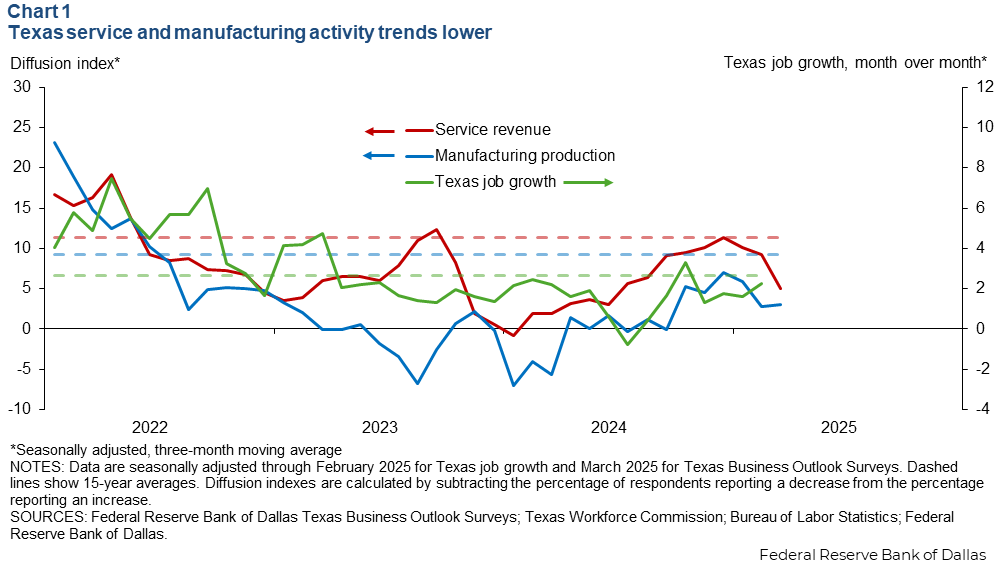
Uncertainty increasing particularly in manufacturing
Uncertainty, especially among Texas manufacturers, has notably increased, the Dallas Fed’s TBOS found. The uncertainty index for both manufacturers and service sector companies jumped in March to levels not seen since late 2022, during the height of the pandemic (Chart 2).
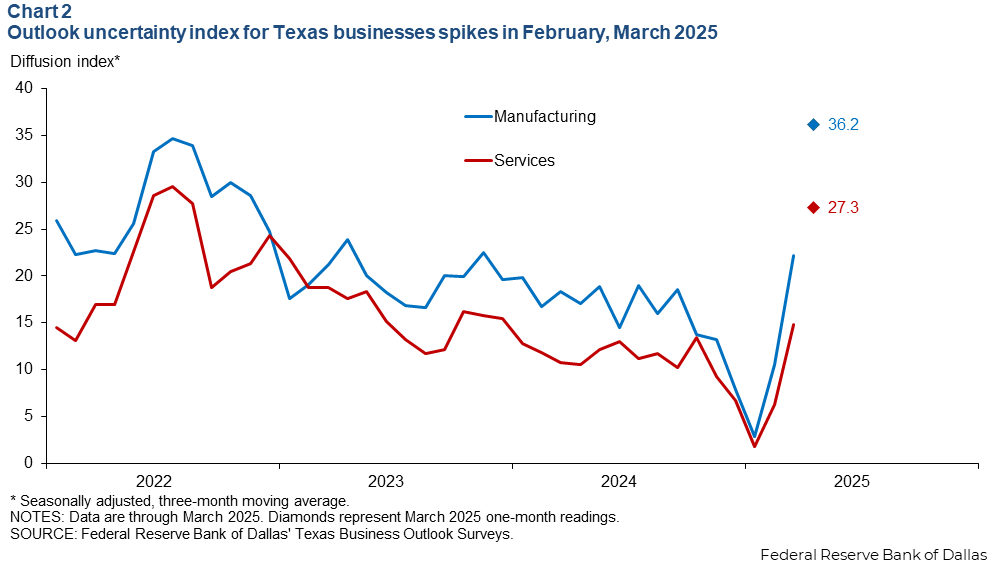
Even before imposition of tariffs, business contacts noted they felt the effects of business condition uncertainty. In February, 38 percent of TBOS participants said they experienced or expected negative impacts from U.S. trade policy ambiguity and tariffs. The response was especially pronounced among manufacturers (44 percent). The most cited anticipated tariff impacts were higher costs or prices, lower demand and delayed investment (Chart 3).
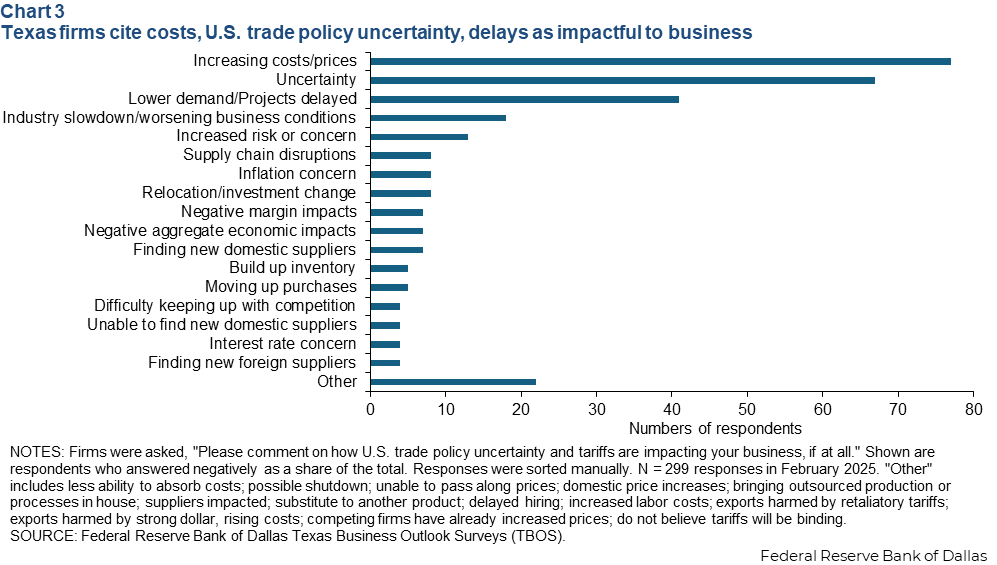
Uncertainty about trade policy and the prospect of higher tariffs has partly led to dimming company outlooks. The outlooks deteriorated sharply in the service sector, declining to their lowest level since mid-2022. In manufacturing, the company outlook index retreated to an eight-month low in March.
Higher tariffs likely to slow Texas growth
Texas is the No. 1 trading state in the nation, with more than $850 billion in total U.S. trade in 2024. The state accounts for 16 percent of the U.S. total (Chart 4).
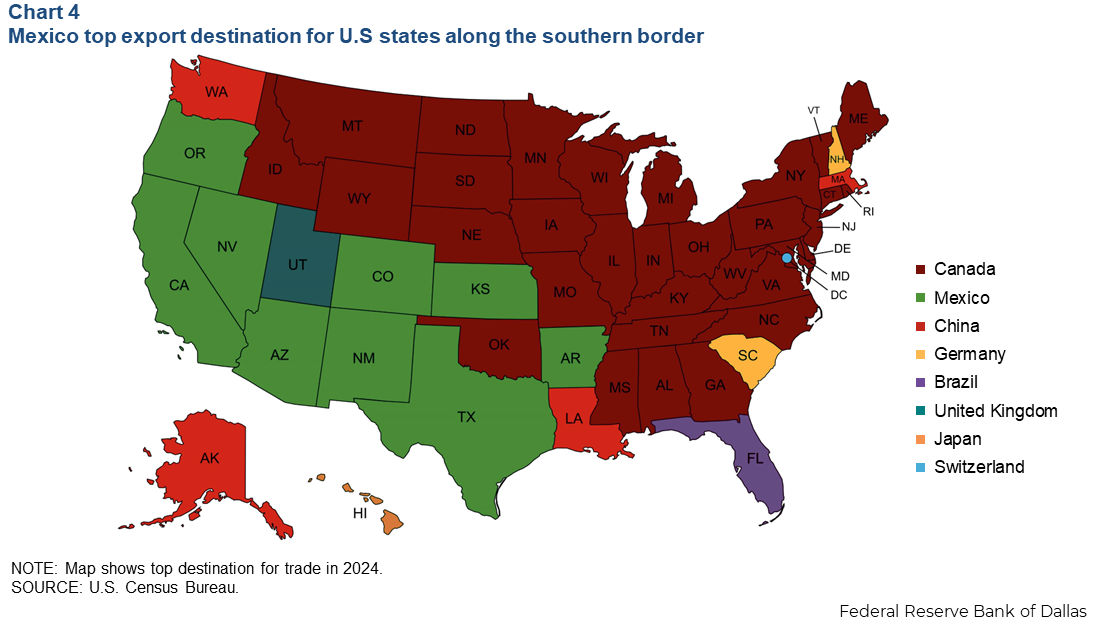
Mexico is Texas’ main destination for exports and the state’s main import supplier. Texas trade with Mexico totaled $281 billion in 2024 (Chart 5).
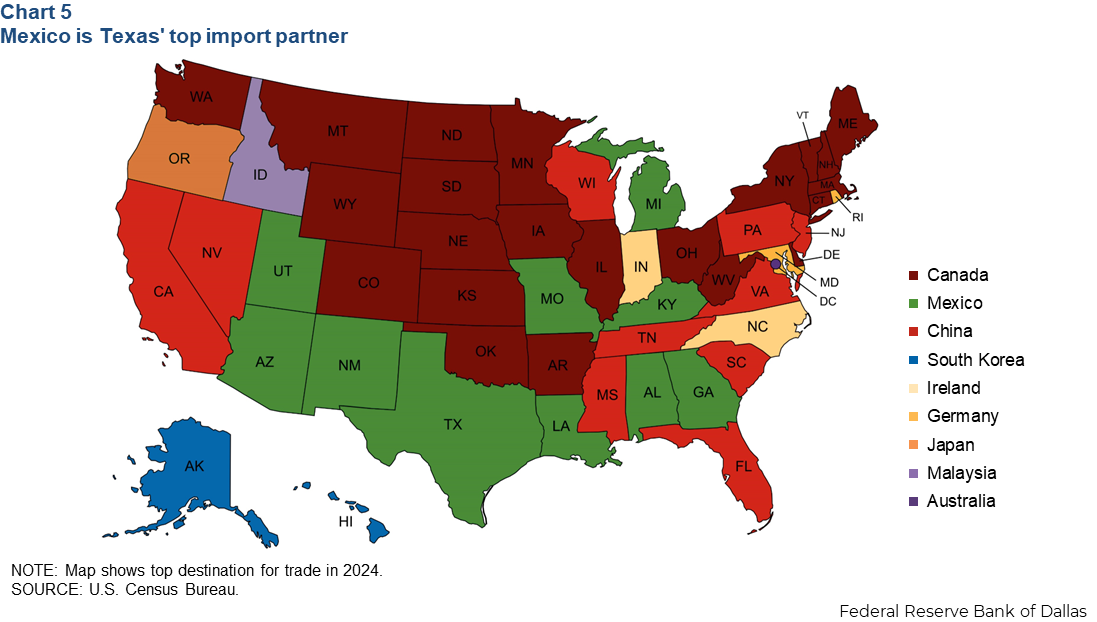
A total 6.8 percent of Texas jobs depended on exports in 2022, according to the International Trade Administration. Moreover, using a state tariff database, the Trade Partnership Worldwide estimates a potential cost of $47 billion to Texas firms from a 25 percent tariff on imports from Canada and Mexico and a 10 percent additional tariff (on top of existing levies) on imports from China.
Anticipated Texas gross domestic product (GDP) growth would decline by 1.5 percentage points because of the loss in purchasing power and reduced demand due to higher prices. The calculation assumes Texas imports from Mexico, Canada and China decline by 40 percent due to a 25 percent tariff on imports from Canada and Mexico and additional tariffs on imports from China. The result also assumes no import substitution from other states or countries.
The estimate is consistent in terms of GDP loss with a recently published analysis from the Perryman Group. Texas GDP grows 3.2 percent on average, so a tariff policy as outlined here would reduce that to 1.7 percent. Lower output would also impact employment. Using Okun’s Law—relating employment change to GDP—a 1.5 percentage point loss in Texas GDP, assuming a constant labor force, implies a loss of about 100,000 jobs. This is a static analysis and ignores medium- and long-run effects on investment and capital accumulation. Based on previous research for the U.S. in a global economy, this channel could increase projected losses.
Most likely, job declines will be concentrated in manufacturing in the interior of the state and along the Texas-Mexico border. Texas’ top five traded products with Mexico are computer and electronic products, transportation equipment, petroleum and coal products, electrical equipment, appliances and components, and machinery. Together, they represent $191 billion in total trade and 258,000 jobs that tariffs could potentially impact.
Stricter immigration policy could further affect Texas, given firms’ reliance on migrants. The 2021–24 migration surge brought an estimated 5.5 million extra immigrants to the U.S., with an estimated 10 percent of them settling in Texas.
Consistent with this surge, the number of Texas firms that report dependence on hiring immigrant workers has increased. The share of Texas firms reporting in the TBOS special questions survey that they rely on hiring workers who moved to Texas from a different country increased to 25 percent in 2024 from 15 percent in 2023. The increase has been across all sectors, with about one-third of manufacturing respondents relying on immigrant workers (Chart 6).
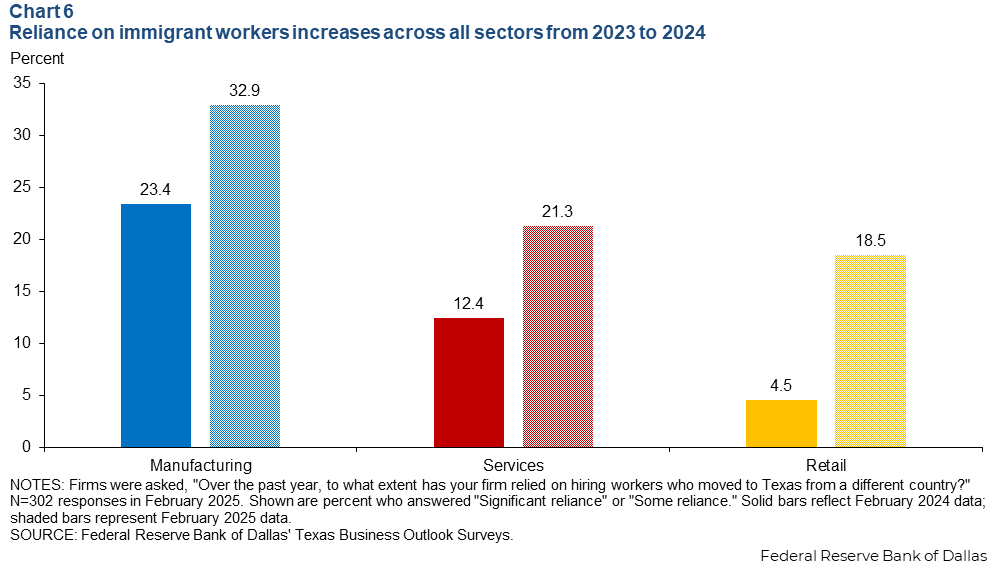
Eighteen percent of firms surveyed expect changes to immigration policy to affect their ability to hire and retain workers this year. In response, many companies said they plan to increase worker utilization or cross-training (43 percent), implement labor-saving technology (40 percent) and increase outsourcing (35 percent).
Softening economic outlook in 2025
The Dallas Fed’s Texas Employment Forecast suggests employment will increase 1.9 percent in 2025.
Half of TBOS respondents, when asked to name their top three concerns over the next six months, cited “level of demand/potential recession,” up from 34 percent in December 2024. The response was the most frequently mentioned, compared with the No. 2 concern, “domestic policy uncertainty,” 44.6 percent, and No. 3, “input costs/inflation,” 35.8 percent.
Going forward, Texas businesses may have to balance the potential positive effects of anticipated deregulation and potential tax cuts with the possible negative impact of more restrictive trade and immigration policy. One survey contact noted, “The uncertainty of how the new trade directives will affect the economy makes it hard to forecast the business environment.”
About the authors





